The Revolutionizing Power of Vertical Seismic Profiling in the Oil and Gas Exploration
In the dynamic realm of oil and gas exploration, where success hinges on deciphering the Earth’s subsurface intricacies, innovative technologies play a pivotal role. Vertical Seismic Profiling (VSP) stands out as a transformative tool, revolutionizing how the industry uncovers and exploits hydrocarbon reservoirs. In this article, we explore the applications, benefits, and significance of Vertical Seismic Profiling in the context of oil and gas exploration and production.
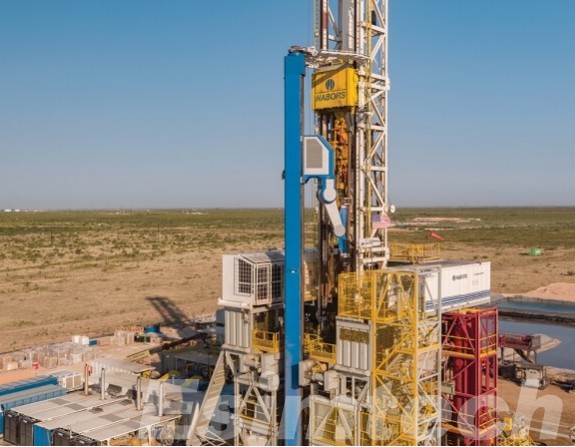
Why Use Vertical Seismic Profiling in the Oil and Gas Exploration
In the intricate dance of hydrocarbon exploration, understanding the subsurface reservoir is paramount. Traditional seismic surveys provide valuable information about the geological structure, but their resolution is often limited by surface measurements. Vertical Seismic Profiling revolutionizes this process by placing seismic sensors directly into boreholes, offering a high-resolution view of the reservoir’s architecture.
The process of Vertical Seismic Profiling begins with the drilling of a borehole, typically alongside an existing well or as part of a dedicated drilling operation. Seismic sensors, such as geophones or accelerometers, are then lowered into the borehole at predetermined intervals. These sensors record the arrival times of seismic waves generated by controlled sources, such as surface explosions or vibroseis trucks, as they propagate through the subsurface. By analyzing these arrival times, geoscientists can create detailed images of the geological formations surrounding the borehole.
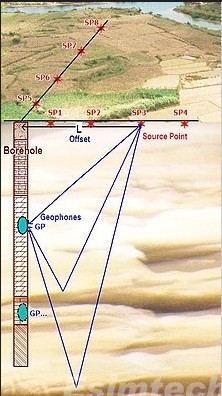
Key Aspects of Vertical Seismic Profiling Applied in Oil and Gas Exploration
1. Reservoir Characterization
Vertical Seismic Profiling plays a crucial role in characterizing subsurface reservoirs by providing detailed information about rock properties, fluid distribution, and structural features. This data is essential for assessing reservoir quality, identifying potential hydrocarbon-bearing zones, and optimizing drilling and completion strategies.
2. Drilling Optimization
During drilling operations, Vertical Seismic Profiling(VSP) enables real-time monitoring of subsurface conditions, allowing operators to adjust drilling parameters and well trajectories as needed. By providing insights into lithology, pore pressure, and wellbore stability, VSP helps mitigate drilling risks and optimize drilling efficiency.
3. Seismic Imaging
Vertical Seismic Profiling enhances seismic imaging capabilities by providing additional constraints and calibration points for surface seismic data. Integrating VSP data with surface seismic surveys improves imaging resolution, enhances structural interpretation, and reduces uncertainties in subsurface imaging.
.jpg)
Future Outlook of Vertical Seismic Profiling in Oil and Gas Exploration
1. Advanced Imaging Techniques
Future advancements in Vertical Seismic Profiling technology will focus on improving imaging resolution and accuracy, enabling geoscientists to capture finer details of subsurface structures. Techniques such as full-waveform inversion, multi-component sensing, and multi-offset VSP will enhance imaging capabilities, providing deeper insights into reservoir properties and architecture.
2. Integration with Machine Learning and AI
The integration of VSP data with machine learning and artificial intelligence algorithms will revolutionize data interpretation and analysis. AI-driven techniques will automate the processing of vast seismic datasets, identify subtle geological features, and optimize drilling strategies, leading to more efficient exploration and production workflows.
3. Real-Time Monitoring and Control
Future Vertical Seismic Profiling systems will offer enhanced real-time monitoring capabilities, allowing operators to optimize drilling operations and reservoir management in real-time. Continuous monitoring of subsurface conditions and fluid movements will enable proactive decision-making, reducing drilling risks, and improving well performance.
4. Exploration in Challenging Environments
As oil exploration efforts push into deeper waters, unconventional reservoirs, and environmentally sensitive areas, the demand for VSP technology will continue to rise. VSP’s ability to provide accurate subsurface imaging in complex geological settings makes it well-suited for navigating challenging environments and optimizing drilling operations in frontier regions.
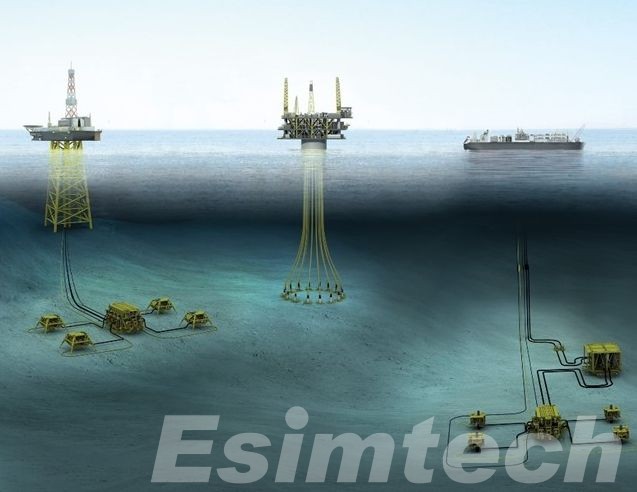
5. Environmental and Regulatory Compliance
Future Vertical Seismic Profiling systems will prioritize environmental sustainability and regulatory compliance, incorporating measures to minimize the environmental footprint of oil exploration activities. Advanced noise mitigation techniques, non-intrusive sensor technologies, and real-time environmental monitoring capabilities will ensure responsible resource development and community engagement.
How Simulation Technology Used for Vertical Seismic Profiling in Oil and Gas Exploration
1. Survey Planning and Design
- Simulation software enables geoscientists and engineers to design Vertical Seismic Profiling surveys by modeling various scenarios and optimizing parameters such as well placement, sensor spacing, and seismic source characteristics.
- Through oil and gas simulation tools, researchers can assess the feasibility of different survey designs, predict the expected seismic response, and identify potential challenges or limitations in data acquisition.
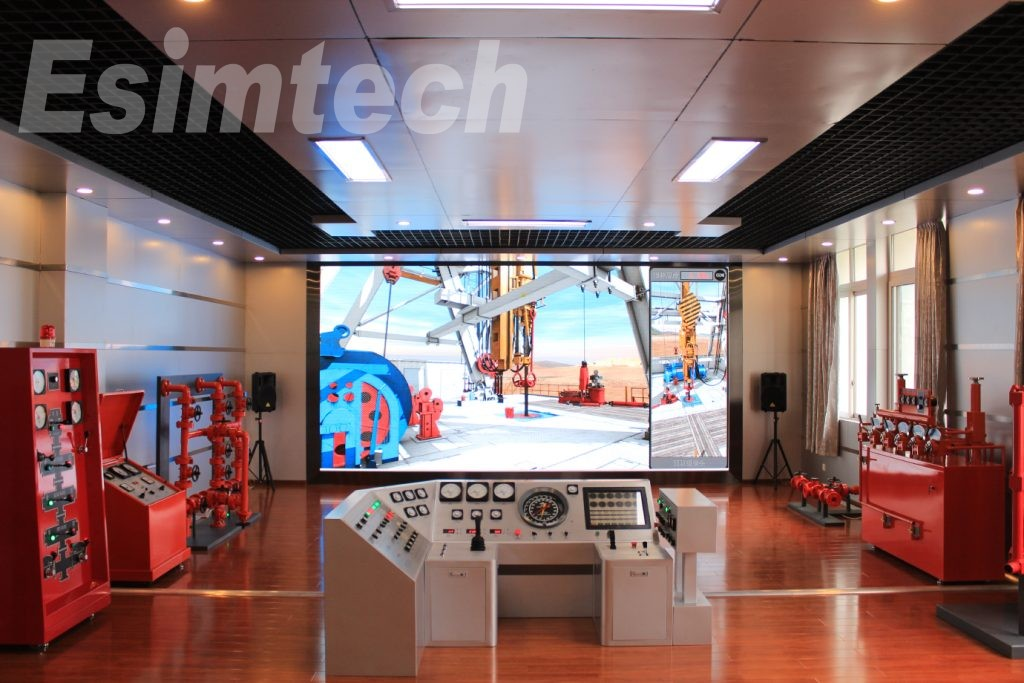
2. Wave Propagation Modeling
- Simulation tools simulate the propagation of seismic waves through subsurface formations, taking into account factors such as rock properties, fluid content, and structural complexities.
- By accurately modeling wave propagation, simulation technology helps predict the arrival times, amplitudes, and waveforms of seismic signals recorded by VSP sensors, aiding in data interpretation and analysis.
3. Synthetic Data Generation
- Synthetic data, generated through simulation algorithms, serve as valuable reference datasets for Vertical Seismic Profiling planning and interpretation.
- These synthetic datasets mimic the expected seismic response of subsurface structures to different acquisition scenarios, allowing researchers to validate survey designs, assess data quality, and optimize processing workflows.
4. Quality Control and Noise Mitigation
- Simulation technology assists in identifying and mitigating sources of noise and interference in VSP data, such as borehole conditions, equipment malfunctions, and environmental factors.
- By simulating noise scenarios and comparing them with recorded data, researchers can develop algorithms and processing techniques to suppress noise, enhance signal-to-noise ratio, and improve data quality.
5. Data Interpretation and Inversion
- Simulation-based inversion methods utilize computational models to interpret VSP data and infer subsurface properties such as rock velocity, density, and fluid saturation.
- By iteratively adjusting model parameters to match observed and simulated seismic responses, inversion algorithms reconstruct detailed images of the subsurface, aiding in reservoir characterization and hydrocarbon prospecting.
6. Risk Assessment and Decision Support
- Simulation technology facilitates risk assessment and decision-making processes by quantifying uncertainties and evaluating the impact of different exploration strategies.
- By simulating alternative scenarios and analyzing their potential outcomes, decision-makers can optimize resource allocation, prioritize drilling targets, and mitigate exploration risks in oil and gas exploration projects.
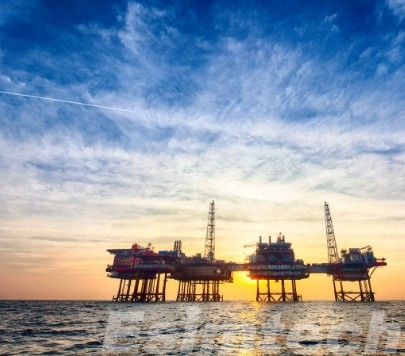
Conclusion
Vertical Seismic Profiling has emerged as a valuable tool in the oil and gas industry, offering a deeper understanding of subsurface geology and enhancing exploration success rates. Its ability to provide high-resolution imaging and real-time monitoring capabilities has revolutionized exploration and production practices, leading to more efficient resource discovery and extraction.
Advancements in Vertical Seismic Profiling technology, such as distributed acoustic sensing, borehole seismic imaging and adopting simulation tools, hold promise for further enhancing the industry’s ability to unlock complex reservoirs and optimize production strategies, empowering the oil and gas sector to navigate the challenges of subsurface exploration with confidence and precision.
